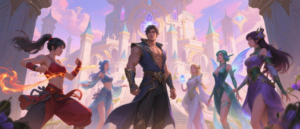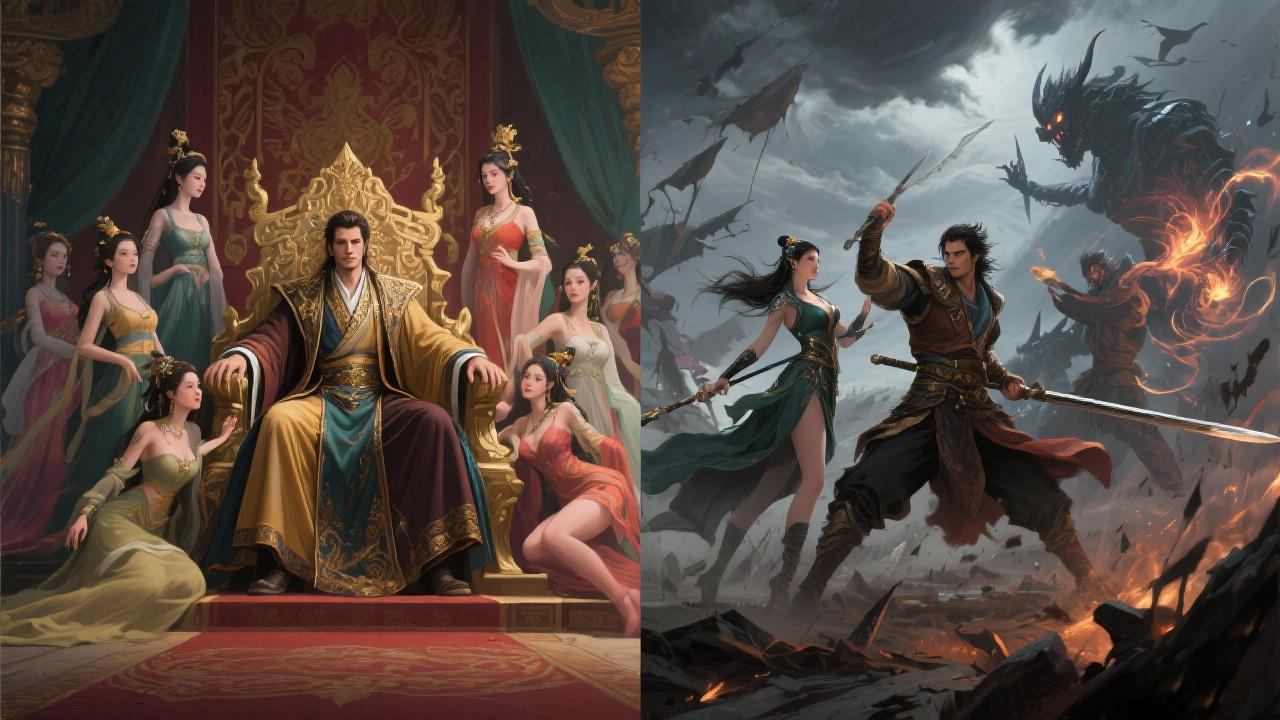The harem trope has long been a defining feature of many cultivation novels. For years, readers expected the hero’s journey to not only include a rise to power, but also the accumulation of multiple female companions, each beautiful, powerful, and dedicated to the protagonist. But as the genre evolves, its place has become a topic of heated debate. Some readers still see it as a key part of the fantasy, while others view it as an outdated and problematic relic.
So, is the harem trope still relevant in modern cultivation novels? The answer is complex, and it’s a direct reflection of the changes in both the genre and its global readership.
The Traditional Harem: A Symbol of Power
In its most traditional form, the harem was a clear symbol of the protagonist’s success. As the hero rose through the ranks, his charm and power would attract powerful and beautiful women. Each new addition to the harem often came with benefits—a powerful family backing, a new skill, or a rare treasure. It was a tangible reward for the protagonist’s hard work, a part of the grand power fantasy.
This form of the trope was deeply tied to the male-centric narratives that dominated the genre for years. It reinforced the idea that a hero’s worth was measured not only by his strength, but also by his ability to attract and protect multiple women. It was a simple, yet effective, formula that satisfied a core aspect of the fantasy for many readers.

The Modern Shift: From Trope to Subplot
Over time, readers have begun to demand more nuanced and realistic romance subplots. The simple “protagonist attracts beautiful women” formula started to feel shallow and repetitive. Authors, responding to this change, began to either abandon the trope or modify it significantly.
Instead of a collection of one-dimensional admirers, modern harems often feature women with their own complex backstories, motivations, and powers. The relationships are not just about the protagonist’s success; they are about genuine connection, conflict, and mutual growth. Some authors now focus on a single, strong love interest, making the romance more central and meaningful. This evolution reflects a growing global readership that values depth and authenticity over simple wish fulfillment.
The shift has been particularly noticeable as the genre’s popularity has exploded in the West. Readers from different cultural backgrounds are bringing new expectations to the table, challenging the old conventions and pushing for richer character development for everyone involved.
The Harem as a Driver of Character Development
The modern harem trope can serve as a powerful tool for protagonist development. Navigating a complex web of relationships forces the protagonist to grow emotionally. It’s no longer just about defeating enemies; it’s about learning to be a good partner, a responsible leader, and a supportive ally to the women in his life. This adds layers to the hero’s character, moving the story beyond a simple progression of power levels.
When done well, a harem can introduce political intrigue, internal conflict, and moral dilemmas. For example, a protagonist might have to choose between two women from rival clans, forcing him to confront difficult choices. This adds complexity and raises the stakes beyond simple combat.
The best modern cultivation novels don’t use the trope as a simple reward, but as a vehicle for meaningful storytelling. They explore themes of love, loyalty, jealousy, and sacrifice, making the romance subplot just as compelling as the main plot.
To dive deeper into how character archetypes have evolved, read our article on the Chinese Web Novels: 10 Authors and Their Bestselling Works.

The Future of the Trope: Niche or Mainstream?
As a new wave of readers and authors enters the scene, the genre evolution is accelerating. The harem trope is no longer the default. It has become a conscious choice. This means it will likely continue to exist, but in a more defined, niche role.
We are seeing a rise in novels with “single female lead” or even “no romance” tags. These stories cater to readers who prefer a focused narrative on the protagonist’s journey without the distractions of a complex romantic life. However, at the same time, the traditional harem trope is still incredibly popular among a dedicated part of the readership, particularly in the original Chinese market. It’s a classic form of power fantasy that will never fully disappear.
The future of the harem trope is not about its disappearance, but about its specialization. It will continue to thrive in certain subgenres and on certain platforms, while other novels push the boundaries of protagonist development in different directions.
For a broader perspective on the genre, check out this in-depth analysis on Fandom’s Cultivation Wiki.
Conclusion
The harem trope is a fascinating case study in genre evolution. It has transformed from a simple symbol of power into a complex romance subplot that can either elevate or detract from a story, depending on its execution. It may no longer be the default for every cultivation novel, but it remains a relevant and defining element for a significant part of the readership. Whether you love it or hate it, you can’t deny its influence on the genre and its ability to shape the protagonist development we all love to read about.
